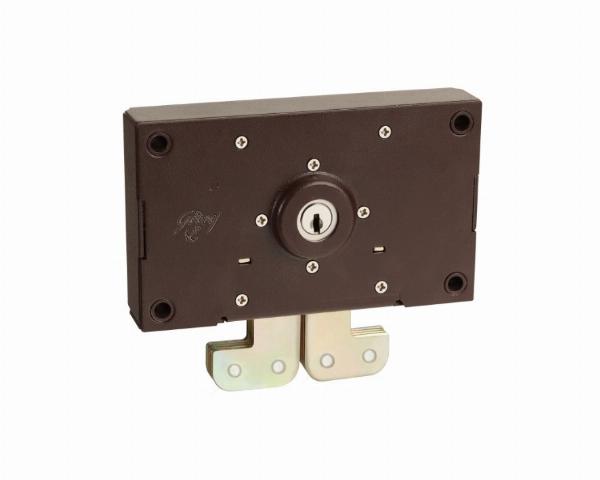RFID Library Software: Revolutionizing Modern Library Management

Strong 8k brings an ultra-HD IPTV experience to your living room and your pocket.
In today's fast-paced digital world, libraries are evolving to meet the demands of modern readers and researchers. One significant advancement in this transformation is the adoption of RFID library software. This cutting-edge technology is revolutionizing how libraries operate, offering enhanced efficiency, security, and user experience. In this article, we'll explore what RFID library software is, its benefits, and how it stands apart from traditional library software solutions.
What is RFID Library Software?
RFID library software integrates RFID technology to manage library resources effectively. It uses RFID tags attached to books and other library materials, which can be read by RFID readers. This eliminates the need for manual barcode scanning, streamlining operations and reducing human errors.
Key components of RFID library systems include:
RFID tags: Embedded in library items for identification.
RFID readers/scanners: Used for tracking and managing resources.
Library management software: Centralized software that integrates all operations.
How RFID Library Software Differs from Traditional Library Software
Traditional library software primarily relies on barcodes and manual scanning for resource tracking. While functional, this approach can be time-consuming and prone to errors. RFID library software offers a more advanced alternative by enabling:
Contactless operations.
Bulk scanning of multiple items simultaneously.
Real-time inventory updates.
Enhanced security through anti-theft mechanisms.
Benefits of RFID Library Software
The adoption of RFID technology in libraries offers numerous benefits:
1. Improved Efficiency
RFID library software significantly reduces the time required for check-ins, check-outs, and inventory management. Staff can process multiple items simultaneously, freeing up time for other important tasks.
2. Enhanced User Experience
Self-service kiosks powered by RFID technology allow users to borrow or return books without assistance. This convenience enhances user satisfaction and encourages more visits to the library.
3. Accurate Inventory Management
Keeping track of thousands of books and resources is a daunting task for any library. RFID library software enables real-time inventory tracking, minimizing the chances of misplaced or lost items.
4. Advanced Security Features
RFID systems come with built-in security mechanisms. Alarms are triggered if someone tries to remove an item without proper authorization, reducing theft and loss.
5. Cost Efficiency in the Long Run
While the initial setup cost of RFID systems may be higher than traditional library software, the long-term benefits in terms of efficiency and reduced labor costs make it a worthwhile investment.
Applications of RFID Library Software
RFID library software is transforming library operations across various sectors, including:
Public Libraries
Public libraries benefit from RFID technology by offering self-checkout kiosks, reducing queues, and improving overall user experience.
Academic Libraries
Universities and schools use RFID library software to manage extensive collections efficiently, ensuring students and researchers have seamless access to resources.
Specialized Libraries
Libraries specializing in rare or valuable collections use RFID technology for better security and precise inventory management.
Key Features to Look for in RFID Library Software
When choosing RFID library software, it's essential to consider the following features:
Scalability: The software should accommodate the library's growing collection and user base.
Integration: It should integrate seamlessly with existing library systems.
User-Friendly Interface: Both staff and users should find the system easy to navigate.
Customizable Reports: Advanced reporting tools help in analyzing usage patterns and making data-driven decisions.
Mobile Compatibility: Some systems offer mobile apps for better accessibility.
Challenges and Considerations
While RFID library software offers many advantages, there are a few challenges to keep in mind:
Initial Cost: The setup, including RFID tags, readers, and software, requires a significant upfront investment.
Maintenance: Regular maintenance of RFID systems is necessary to ensure smooth operations.
Data Privacy: Libraries must ensure that user data collected via RFID systems is secure and complies with privacy regulations.
The Future of RFID Library Software
The future of library management lies in integrating advanced technologies like RFID with AI and IoT. Imagine a library where books can communicate their locations or send reminders to users about overdue returns. RFID technology is the foundation for such innovations, paving the way for smarter libraries.
Conclusion
RFID library software is transforming traditional library management into a more efficient, secure, and user-friendly experience. With its ability to streamline operations and enhance resource accessibility, this technology is becoming a must-have for modern libraries. Whether you’re managing a public, academic, or specialized library, RFID solutions can elevate your library services to the next level.
Note: IndiBlogHub features both user-submitted and editorial content. We do not verify third-party contributions. Read our Disclaimer and Privacy Policyfor details.







